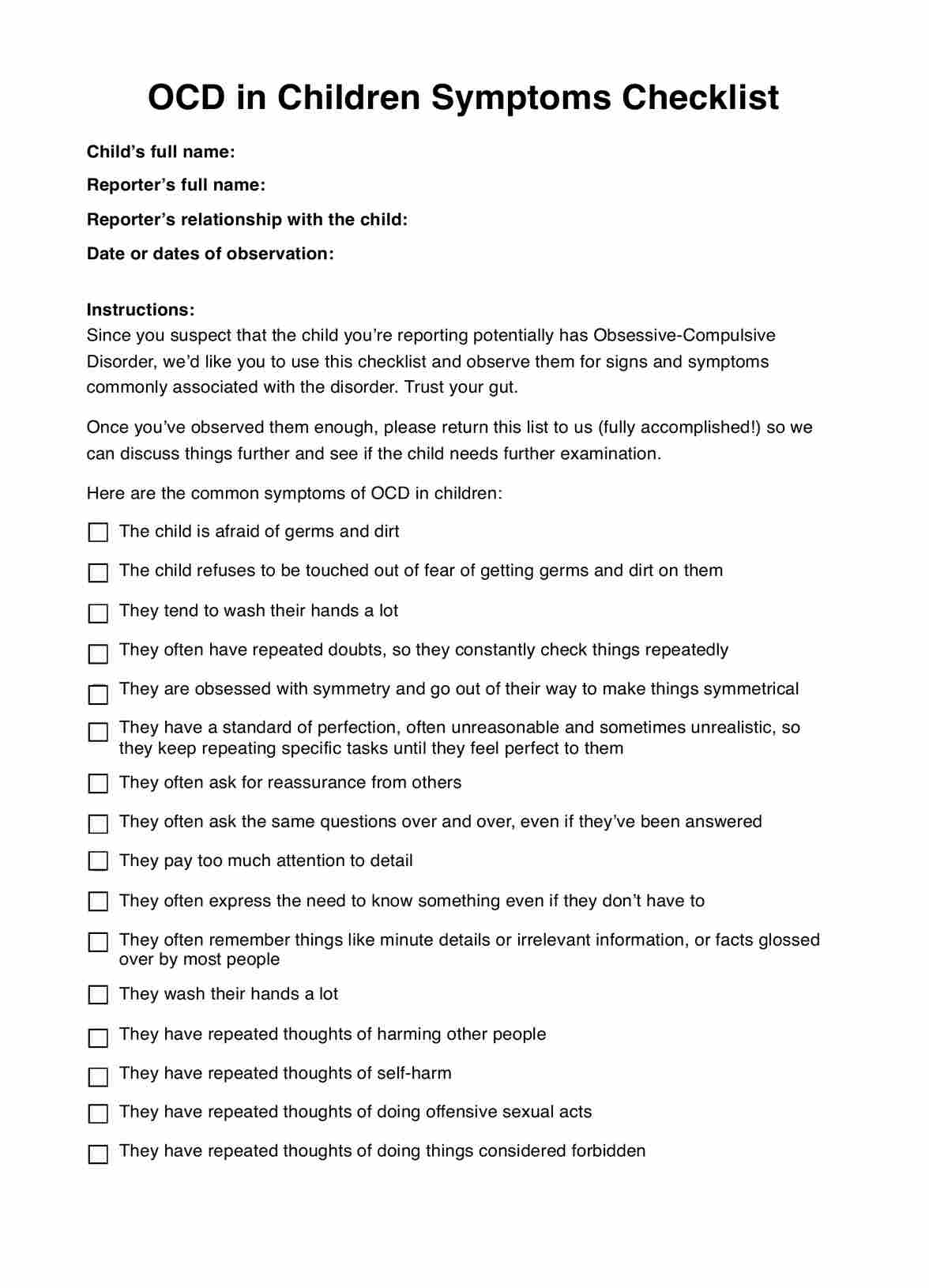No. It’s a screening tool. It’s something that’s best used at the beginning of a comprehensive examination and as a monitoring tool. Please don’t use this to diagnose kids with OCD. Just because they have a sign or symptom of OCD, that doesn’t mean they have OCD.

OCD in Children Symptoms Checklist
Learn about OCD in Children Symptoms Checklists, then download our PDF template and use it for your practice!
OCD in Children Symptoms Checklist Template
Commonly asked questions
Healthcare professionals will likely describe anti-depressants, anti-anxiety medication, and similar medications to manage the distress that patients feel when their obsessions are bothering them too much.
Therapy, specifically Cognitive Behavioral Therapy and Acceptance & Commitment Therapy, might be recommended. Another example is Exposure and Response Prevention, which should expose them to triggers and help them realize there’s nothing to worry about.
It depends on the discussions with OCD specialists. They might instruct people to use this checklist once daily, every two or three days, or even once a week. It depends on the suspected severity of the potential OCD and its signs and symptoms.
EHR and practice management software
Get started for free
*No credit card required
Free
$0/usd
Unlimited clients
Telehealth
1GB of storage
Client portal text
Automated billing and online payments











